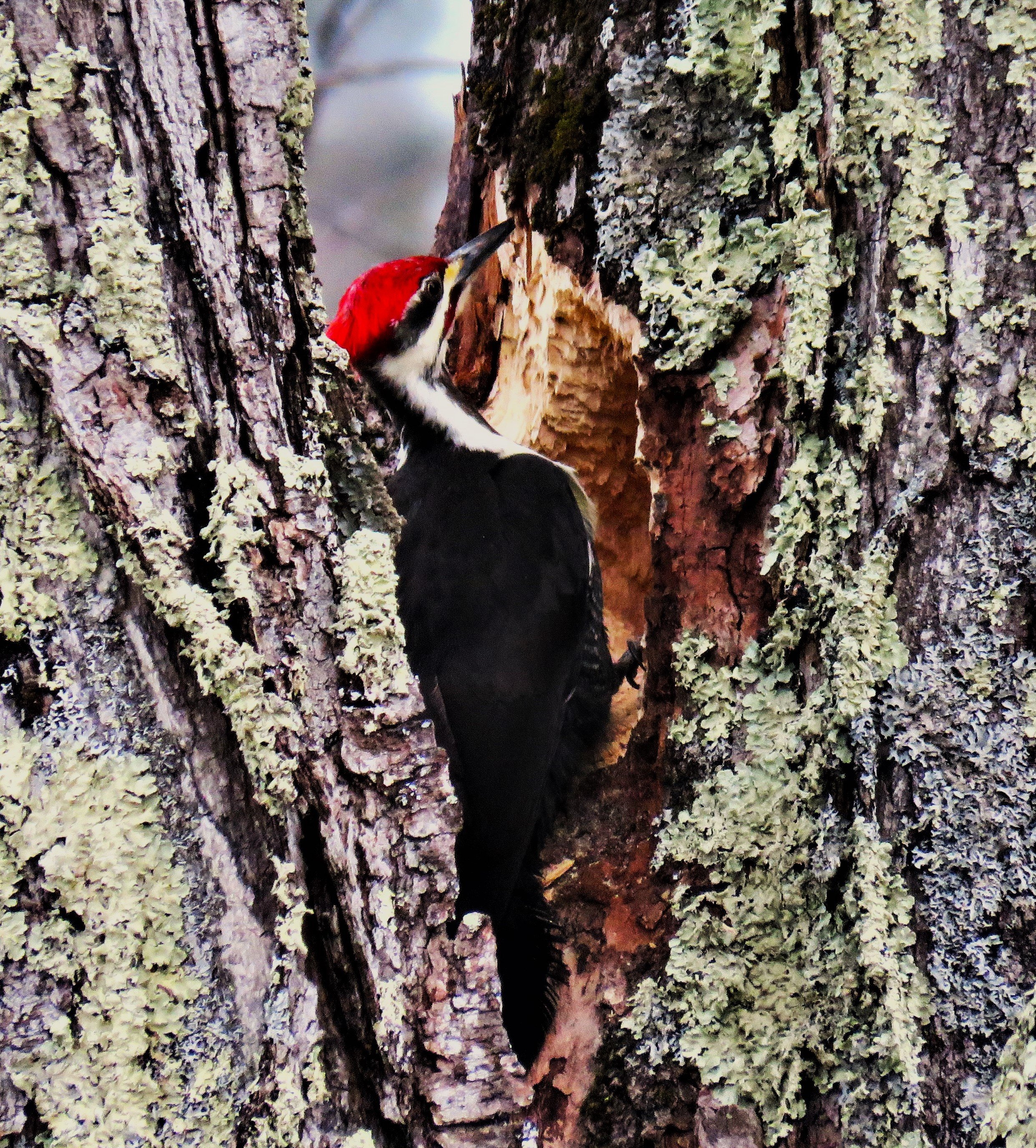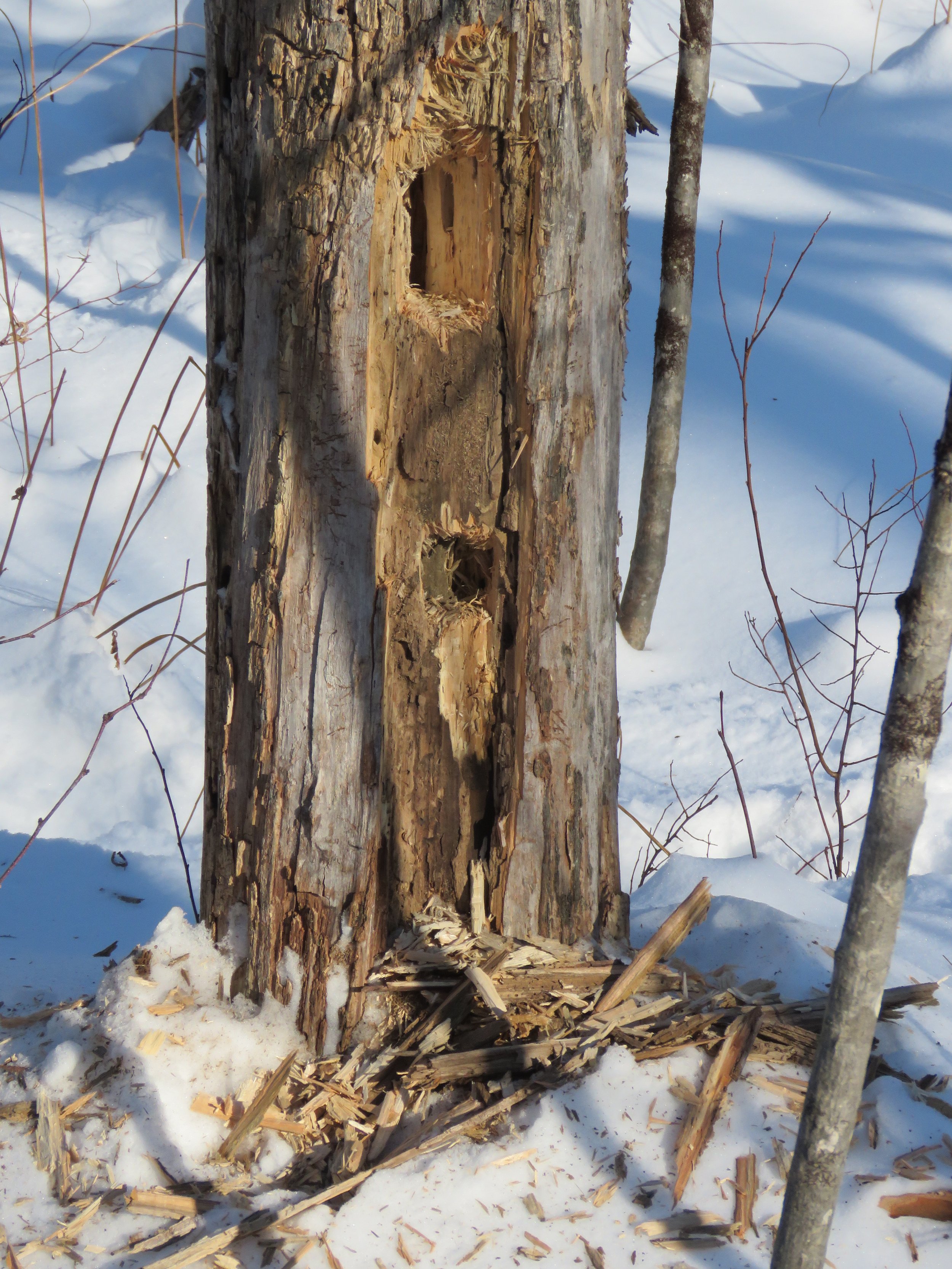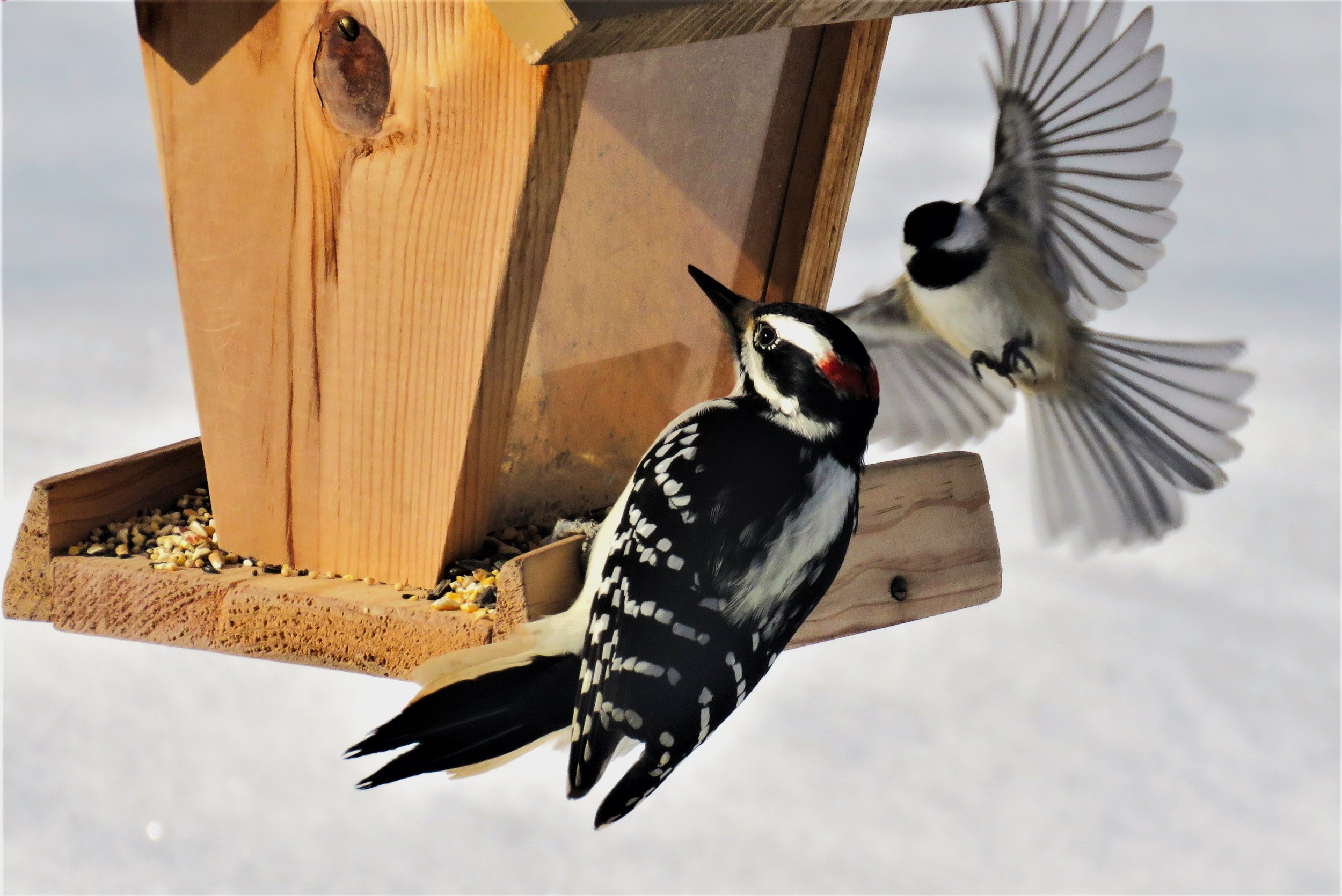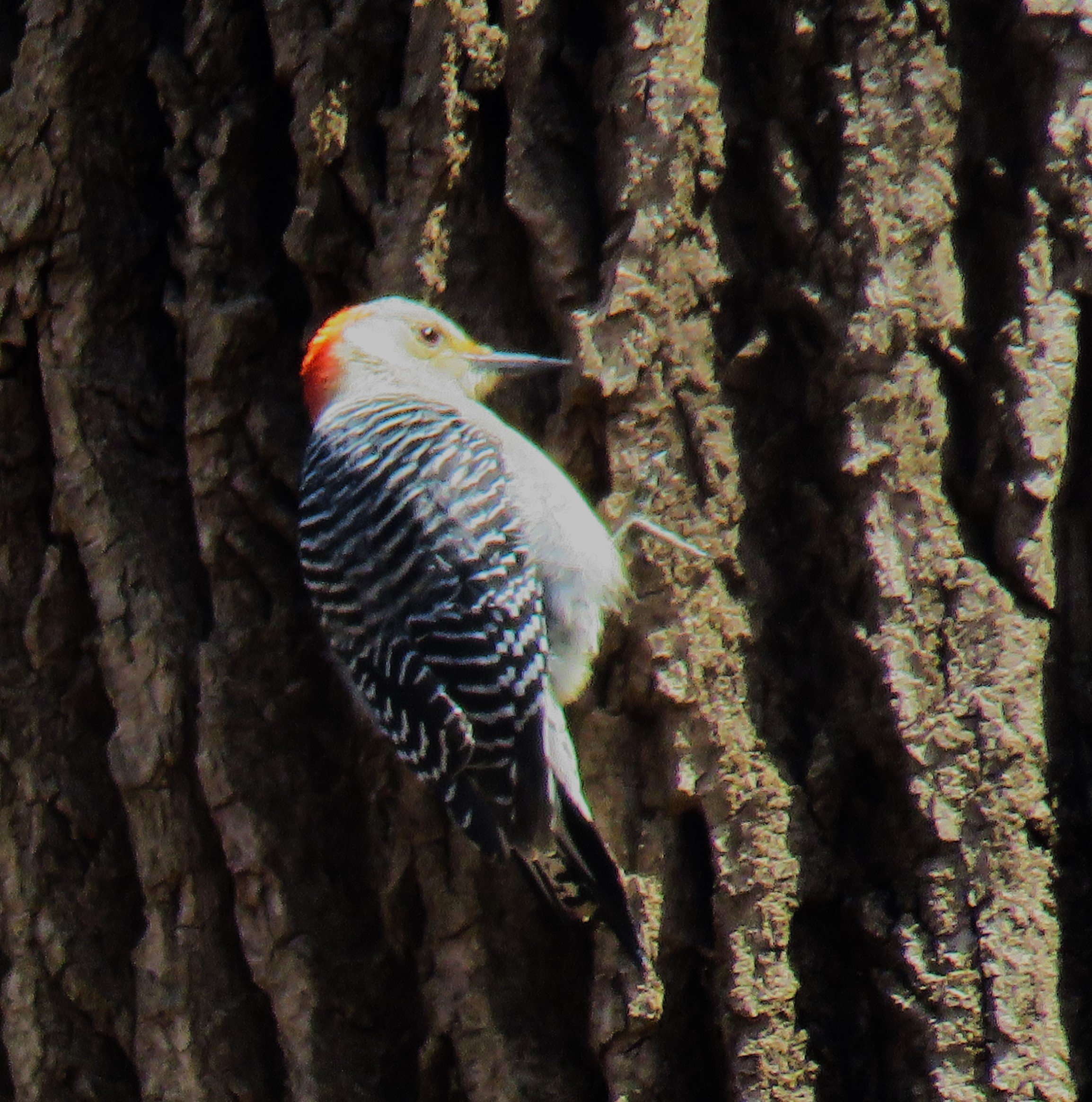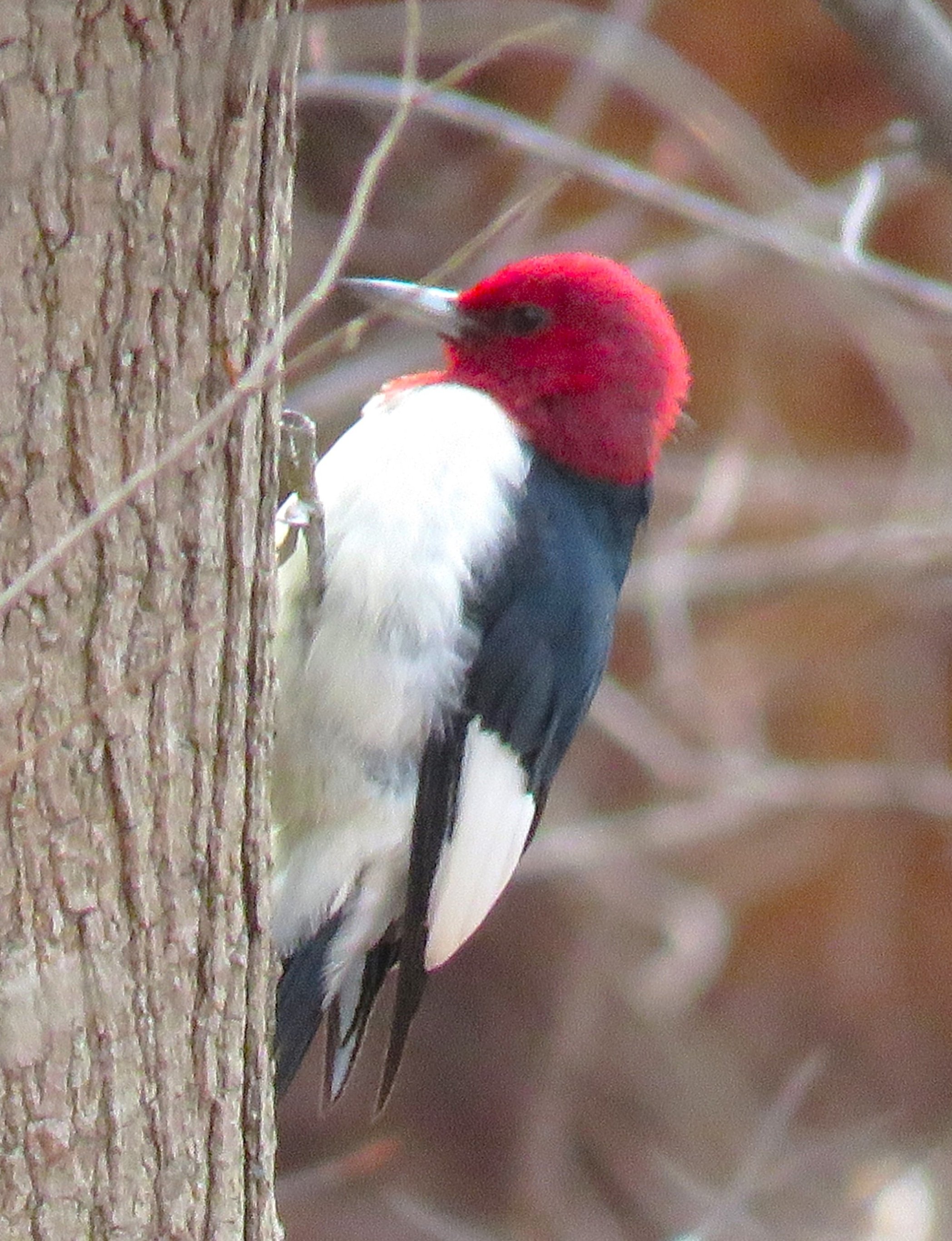Phenological Phacts and Photos w/ Carl Martland / March 2023
Hear that? It’s a woodpecker!
Phenology – “a branch of science concerned with the relationship between climate and periodic biological phenomena (as the migration of birds or the flowering and fruiting of plants).”
On a winter day, while walking through the woods, the sounds and worries of civilized life drift away. With the leaves gone, you can see hundreds of trees rising up the hillsides, and the snow dampens whatever noises are made by an occasional gust of wind. Most of the birds have retreated, if not to the south, then to the vicinity of their favorite feeders. A crow may call in the distance, but that really doesn’t qualify as bird song. Turkeys may well have crossed the trail here and there, but probably you won’t see them, and you certainly won’t hear them making any kind of sound that would be mistaken for singing. We trudge through the snow in silence, admiring the bark of the birches and beeches, searching for animal tracks – not at all bothered by the stillness. And then, we hear the distinctive rat-tat-tat of a woodpecker. Maybe just one short sequence, maybe prolonged tapping repeated again and again. At first, the sound may be indistinct, and you’re not even sure that you heard it. You stop, you listen, then it’s repeated, and you say “Did you hear that? It’s a woodpecker!”
But where is it? You stay still, hear it again, and move closer to where it is pecking. You stop, look up toward the top of that tall poplar – no, not there; is it on a different tree, or is it just hiding on the other side? Ah, there it is!
March 18, 2016. I snowshoed into Foss Woods to the trunk of a fallen poplar that I call Carl’s Seat, only to find that it fails as a seat in two feet of snow. I had to go a little further to find a higher log over the trail where I could eat lunch and, for at least a half hour, listen to a pileated woodpecker knocking very loudly once or twice a minute, first from a perch by the landing and then from a closer perch by the spring houses. I didn’t see it except when it twice flew from one tree to another, its feathers brilliant against the clear blue sky.
1 Photos and text by Carl D. Martland, founding member of ACT, long-time resident of Sugar Hill, and author of Sugar Hill Days: What’s Happening in the Fields, Wetlands, and Forests of a Small New Hampshire Town on the Western Edge of the White Mountain. Quotations from his book and his journals indicate the dates of and the situations depicted in the photos.
Big Brother or the Twins?
In the North Country, three species of woodpecker are common. The largest, of course, is the magnificent pileated woodpecker, the largest remaining woodpecker after the disgraceful extermination of the even more spectacular ivory-billed woodpecker more than a century ago.
March 9, 2022. A week ago, Jim Keefe asked me if I’d seen the pileated woodpecker drilling holes into a dead tree near the end of Post Road. I hadn’t, but today, I couldn’t miss the loud pecking of what likely was that very bird as it expanded a large hole in the maple at our end of Post Road. It ignored me as I took photos and a video showing chips flying as it ducked its head in and out.
January 31, 2022, 15 degrees, clear. The snow was only 8-12 inches deep, so I just wore my high boots, skipped the snow shoes, and headed out to Foss Woods. I heard three woodpeckers and took a photo of clippings scattered by a pileated, but didn’t see any. The fresh snow was quite beautiful.
This woodpecker’s call must have been the model for the Woody Woodpecker call recognized by all of us who once watched the Saturday morning comics. I know, I know. kids no longer have to wait until Saturday morning to watch the comics, fearing that their father will command them to “Turn off the TV and go outside and play.” They can watch whatever they want, whenever they want, so long as they can get online. However, I’m leaving this sentence as it is, because it will be well understood by anyone who qualifies for Medicare.
The other two common species appear to be twins. Both downy woodpeckers and hairy woodpeckers have similar black & white markings, and the males of both species have a distinctive red spot on their heads. The guidebooks tell us that the best way to distinguish them is by size, for the hairy is much larger than the downy (9.25 inches long versus 6.75 inches). That fact may help if one of them poses at the feeder while another hungry bird agrees to serve as a point of comparison. However, relative size is pretty much useless if you’re craning your neck to look up toward a single bird pounding away at a dead branch near the top of an 80-foot poplar that’s just the other side of the brook!
January 8, 2021. One of the woodpecker twins flew into the feeder, and at first I wasn’t sure which one. However, since it wasn’t too much larger than the chickadee that conveniently flew in as I took this photo, I figured it must be a downy rather than a hairy.
Each of the twins has pretty much the same pattern of colors, although the downy usually has more white showing on its wings. The main distinguishing feature for the hairy is its longer bill, while the main distinguishing feature for the downy is the bristly tuft of yellow hair by the end of its bill. If the bird is close, you may be able to see one of these features, but I find I need a good photo to be sure.
February 2, 2018, 20 degrees, partly cloudy and clearing. Five inches of snow last night, making a total of a foot of soft snow atop the frozen remnants of January’s. A downy woodpecker perched, fluffed out against the cold next to my trail out to the Lower Meadow. I took a photo that showed the yellow tuft by its bill.
April 28, 2021. A female hairy woodpecker made a rare landing on our back lawn today. I knew it was a female, because it lacked the red spot on its head, and I knew it wasn’t a downy, because it was almost as large as a blue jay that foraged about ten feet away. The photo also shows the absence of a yellow tuft at the base of the bill.
New Neighbors?
New Hampshire is just past the usual range of the two other woodpeckers that are common in the northeast: the red-headed woodpecker and the red-bellied woodpecker. Both of these are colorful, easily identified as woodpeckers, and similar in size to the hairy woodpecker. I have never seen a red-bellied woodpecker anywhere in our region, and I have seen only one red-headed woodpecker that happened to sit on a granite fence post by the end of the driveway nearly twenty years ago. In Indiana, I’ve often seen them both, usually by the feeders at a Nature Center or along one of the trails in a state park. I decided to include these two birds in this photo essay because they could soon become common in the North Country. According to my 2003 edition of The Sibley Field Guide to Birds, the red-headed woodpecker is common as far east as western Vermont, less than a hundred miles away. The red-bellied is even closer to the North Country, as the same guide shows it to be common below the notches and rare in the northernmost parts of New Hampshire.
March 27, 2019, McCormick’s Creek State Park, Indiana. The red-bellied woodpecker certainly has a red spot on its head, but at most a hint of red on its belly. So much for being a well-named bird!
November 29, 2015, Shakamak State Park, Indiana. The red-headed woodpecker certainly displays our patriotic colors, but in France, whose flag is so much simpler than ours, this would be the national bird.
These two species are not only close, they have been getting closer and closer for decades. Before David Sibley became the most trusted name in birds, that honor went to Roger Tory Peterson, whose Field Guide to the Birds was first published in 1934. When I was growing up, my family had the 45th printing of the guide, which is what I still use to keep track of my life list. That guide, which had only been updated through 1947, showed the red-bellied coming only as far north as Delaware and the red-headed coming only as close as western New York and Massachusetts. If their expansion into northern New England continues, we may soon hear that they have made it to the North Country. Until then, enjoy Big Brother and the Twins, even if we can’t always tell which twin we’re looking at!
February 6, 2021. Hairy or Downy? Who cares?

